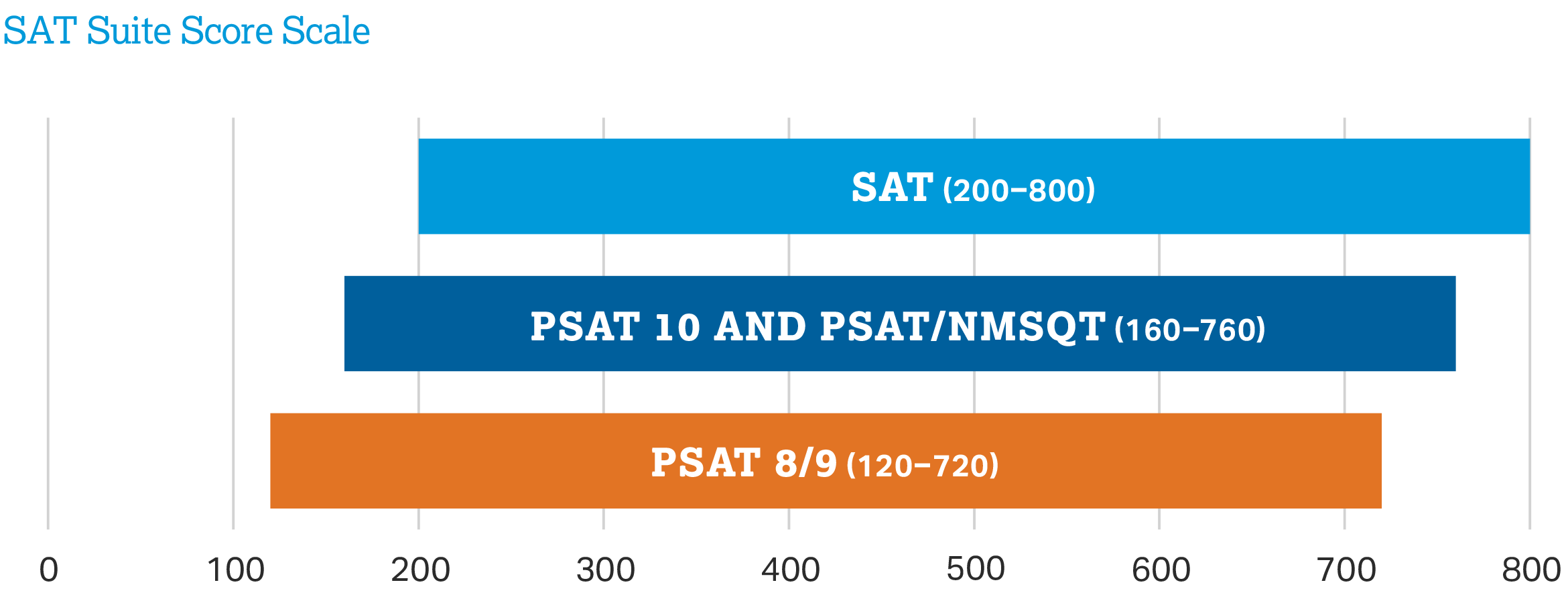Score Structure
The SAT Suite of Assessments provides detailed information about student learning by reporting different types of scoring metrics. Each assessment reports two section scores (one in Reading and Writing and one in Math) and a total score (the sum of the two section scores). These scores give an enhanced profile of students' skills and understandings.
Note: The SAT Essay will be available only in states where it's required as part of SAT School Day administrations. Essay scores are reported separately and not part of a student’s total score.
When and Where to Get Scores
You can view scores for the SAT, PSAT/NMSQT, PSAT 10, and PSAT 8/9 and find access codes for students who need them by signing into the K–12 score reporting portal. View the score release schedule to find out when student scores will be available.
Common Score Scale
The SAT Suite uses a common score scale, providing consistent feedback across assessments to help educators and students monitor growth across grades and to identify areas in need of improvement. This level of feedback can help both students and educators engage in the best possible practice for future assessments: strong classroom work and instruction.
Middle schools and high schools can also use this information to evaluate their curriculum. Higher education institutions can use the new scores to get deep insight into student readiness.

Total Score and Section Scores
Each of the assessments in the SAT Suite reports a total score that is the sum of two section scores: Reading and Writing and Math. Scores for the SAT Essay (only offered in certain states) are reported separately and aren't part of a student's total SAT score.
Ranges for Total Scores
- SAT: 400–1600
- PSAT/NMSQT and PSAT 10: 320–1520
- PSAT 8/9: 240–1440
Ranges for Section Scores (Reading and Writing, Math)
- SAT: 200–800
- PSAT/NMSQT and PSAT 10: 160–760
- PSAT 8/9: 120–720